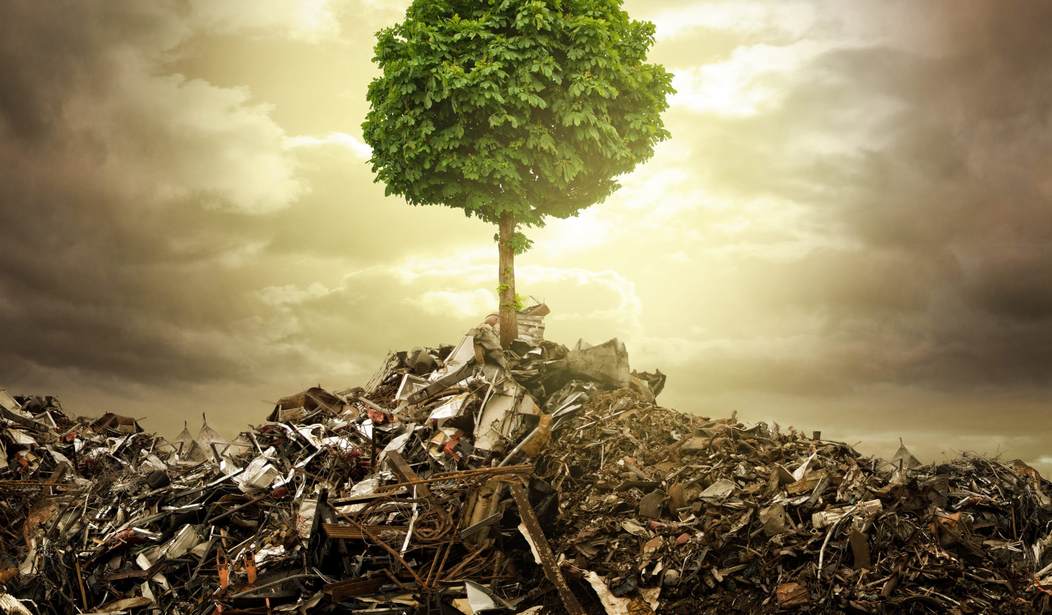That’s right — according to a British health watchdog, trees can actually increase pollution in a city, worsening the air people breathe.
According to Britain’s National Institute for Health and Care Excellence (with the Orwellian acronym NICE, as in C.S. Lewis’ That Hideous Strength), streets with leafy trees could actually contribute to pollution, rather than decreasing it. “Street trees were unlikely to reduce air pollution in most street designs and could worsen it in some cases,” NICE reported in a 60-page document issued last week. “Leaves and branches slow air currents, causing pollutants to settle out,” rather than dispersing into the general atmosphere.
These findings are not unique to Britain, however. In 2012, Belgian researchers modeled a variety of real-life roadside urban vegetation to see whether the addition of greenery improved air quality. Their study concluded that trees on city streets could reduce ventilation, increasing dangerous pollution.
This should not necessarily be news. Humans have long known that there are hundreds of different types of trees, and that they can have very different effects in their environment. For example, cedar, eucalyptus, and pine woodland trees give off volatile organic compounds (VOCs), which, in the presence of sunlight, react with the nitrogen oxide in car emissions, producing ozone. At the ground level, ozone can cause various diseases.
Various factors, such as street design, the placement of trees, canopy density, seasonal changes, and wind can impact the health value of urban vegetation. Sometimes, the addition of trees can do more harm than good.
Trees in cities have also been shown to improve mental and physical health, however. A Canadian study in 2015 found that an average of 10 extra trees per block made people living there feel healthier, a sensation they compared to a $10,000 raise or being seven years younger.
This feeling wasn’t entirely ungrounded — participants in the study believed that trees reduce air pollution, and many trees do indeed pull ozone, particulates, and other pollutants into their leaves and out of the air. The psychological benefits of greenery aren’t just a feeling — being around trees has been found to reduce stress and increase propensity to exercise.
These nuanced findings about urban greenery come as Britain is focused on improving poor air quality, which the Royal Colleges of Physicians and Paediatrics and Child Health estimated causes 40,000 premature deaths a year. Last month, the country’s high court blamed the government, arguing it was complacent about tackling air pollution. The case revealed that the Treasury blocked plans to charge diesel cars a fee for entering cities plagued by air pollution (a policy which likely would have proved very difficult to implement).
Some have called for tighter regulations against polluters, more effective tracking of pollutants in the air, and “green” (and in many cases impractical) initiatives like replacing cars with public transport or bicycling. Other ways to decrease pollution involve monitoring second-hand tobacco smoke, nitrogen dioxide from gas cooking, and solvents from plastics and paints. Much of this can be achieved outside government control, on the local level, or by more conscientious schooling and parenting.
Next Page: Are Britain’s green spaces in danger? How do you acknowledge pollution concerns without becoming a climate alarmist?
The Financial Times reported that Britain’s urban green spaces are “at risk of rapid decline” because parks are strapped for cash. A University of Leicester study found that between 2006 and 2012, over 54,000 acres of green space were “eaten up” to make room for “artificial spaces” — for unimportant things like, I don’t know, human housing.
While it is important to balance development with greenery, much reporting on the subject demonstrates a bias against buildings and vehicles which are vital for people to live and work well. But there are indeed positive developments tracking pollution which do not necessarily build climate alarmism.
Interestingly, New York City started an initiative last year called TreesCount, where 2,300 volunteers mapped the city’s trees, giving them “a unique ID number” and “a color indicating its species.” The project uses figures from the U.S. Forest Service to estimate the benefits each tree gives in concrete dollars, to reflect the retention of rainwater, conservation of electricity, and reduction in air pollution each provides.
Many cities likely already know which trees help with pollution and the best way to plant them so as to prevent a worsening in air quality. Further developments in this arena are nonetheless important, however.
Perhaps even more importantly, cities must examine the health costs of pollution, without the alarmist tendencies of many environmentalists who over-stress the damage of greenhouse gases, predicting global catastrophe which stubbornly refuses to arrive. While prioritizing air quality, regulators must not worsen the economic conditions for everyone by cracking down needlessly on cars and the free transit of everyday people.
Do not let the irrational fear of a looming catastrophe (projected ever farther and farther into the future, as alarmist climate models are adjusted) interfere with protecting the safety and quality of life in the here and now. Pollution can be a real threat, but it must not be over-emphasized as the coming of Armageddon.









Join the conversation as a VIP Member